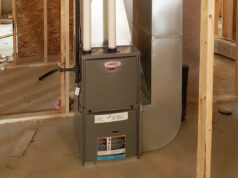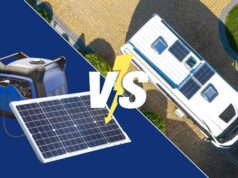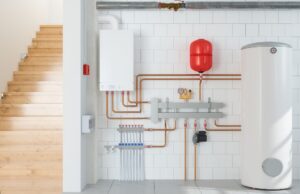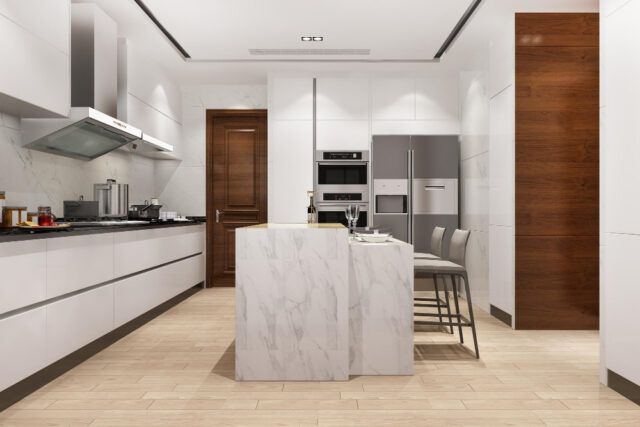
Choice
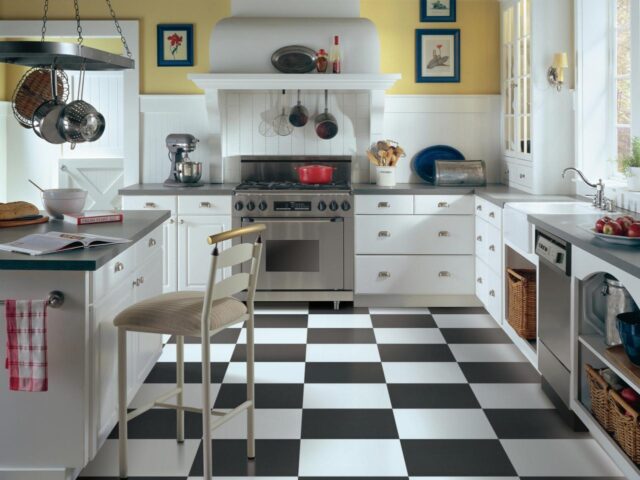
Vinyl flooring offers an ideal combination of durability and style in the kitchen, being stain-proof and water-repellant while coming in various designs.
Choose between more economical peel-and-stick vinyl sheets, premium sheet vinyl options or premium rigid core WPC or SPC options such as LVP (luxury vinyl plank). LVP provides seamless photo-imaging technology to imitate natural materials.
Cost
Vinyl makes an affordable, durable, and straightforward option for kitchen flooring because of its affordability, easy care requirements, and durability. Regular vacuuming and sweeping should help prevent dirt from scratching the surface; warm water mixed with mild detergent is usually sufficient to remove stubborn stains or food spills. Plus, vinyl’s cushioned underfoot surface simplifies moving around than tile or stone surfaces.
Vinyl flooring comes in various colours, patterns and textures that suit different budgets – from cheap peel-and-stick products to premium linoleum and vinyl plank options. Some brands even provide printed options featuring thick wear layers to prevent fading and staining for even greater value for your money. When purchasing vinyl, always look for quality over quantity; choosing an efficient product ensures maximum return for investment.
Linoleum, an eco-friendly material composed of coloured cement, makes an attractive and practical option for kitchen floors. This natural material can either be laid on rolls (professional installation is recommended) or installed as individual tiles without professional help – either way, it offers jazzy geometric patterns to natural wood motifs that will add value and resale value to your home. Linoleum may cost more than vinyl, but its higher resale value makes up for its higher cost; additionally, it makes an excellent alternative to cork’s unique and textural appearance – another renewable resource made from tree bark with unique textures compared to vinyl flooring options that add value while adding resale value while cork’s special appearance is only offered by cork’s renewable nature made from the bark of trees which gives unique textured surfaces when laid flat against its base surface.
Durability
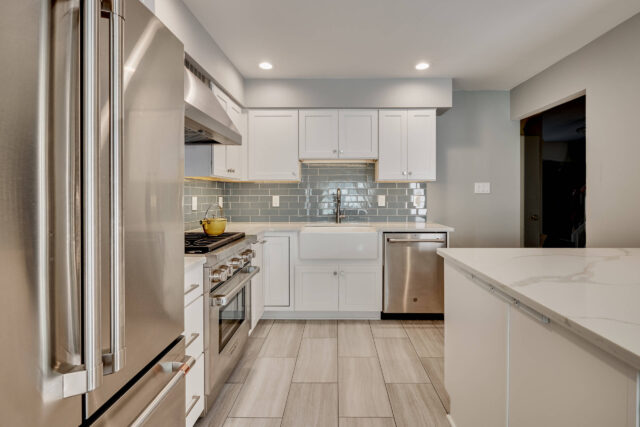
Vinyl provides the ideal material for both quick DIY kitchen makeovers and long-term investments, offering options suitable for every budget. Traditional vinyl comes in peel and stick (cheapest), sheet vinyl, luxury vinyl tile (LVT) or engineered vinyl plank (EVP), both premium options with even higher costs.
This material stands up well against liquid and spills and can be easily cleaned up after. Furthermore, its slip-resistant surface provides extra safety for families with children or elderly members in the kitchen and is compatible with underfloor heating.
Kitchen vinyl flooring is highly resistant to mould, mildew and bacteria growth – perfect for homes where food preparation and consumption is a primary activity.
Durability depends heavily on the thickness of the wear layer, and best brands typically feature 20 mil wear layers that are both free of phthalates and PTFE and resistant to fading and scratching.
Style
If vinyl flooring conjures images of plasticky rolls used by your grandmother, you might be amazed to discover that modern vinyl rolls and luxury vinyl tile/plank (LVT) products look virtually indistinguishable from genuine wood, stone and tile floors – not to mention being tough, practical and hygienic!
The ideal vinyl floors are easy to keep clean, water-resistant and stain-proof. Vacuuming and sweeping will remove dust while wiping with warm water and neutral detergent will take care of most spills or stains. Plus, vinyl is more comfortable underfoot than tile or stone!
Vinyl’s waterproof properties provide protection from kitchen messes. Spills of water or wine won’t damage them, while dropped cutlery or glass won’t leave marks or stains behind. Some vinyl floors even come treated with Microban, an antibacterial agent which blocks bacteria growth.
Vinyl kitchen flooring options are among the more cost-effective choices available, lasting years before needing replacement. Ceramic or porcelain tiles typically cost more upfront and need regular upkeep to retain their beauty; additionally, tiles can crack or break if not installed properly and become cold to stand on for extended periods.
Installation
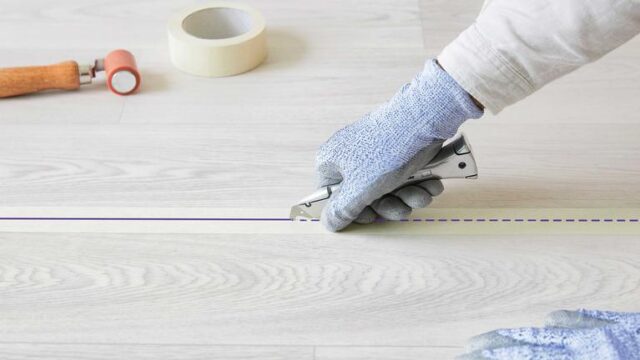
Vinyl kitchen flooring, including SPC flooring, is relatively affordable and easy to install, making it an excellent DIY project. Plus, its variety of colors, designs, and patterns allows it to complement any decor style, while its durability, especially in the case of SPC flooring, allows it to withstand high traffic levels for many years to come.
Vinyl comes in several formats, from vinyl tiles (LVT), vinyl roll and luxury vinyl planks (LVP). However, sheet vinyl remains the most popular choice – cutting it to fit your space without seams is simple with sheet vinyl installation on flat, even surfaces without direct sunlight exposure – you can choose between perimeter glue application or complete glue application depending on your preferences.
Vinyl can also be found that emulates other materials, like wood and stone. Encaustic tile trends can be reproduced using easier-to-keep-clean vinyl. Playing with scale can add pattern to kitchen vinyl; in this kitchen for example a combination of smaller square LVT tiles are tessellated to form an eye-catching design which divides up the room beautifully. Coordinating colours between walls and cabinets also work well to bring all design elements together in the room.


